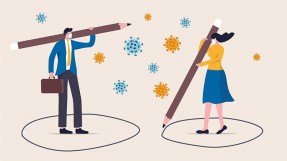Popular Categories
Introduction
Imagine waking up and checking your phone, only to see a headline that says, “Government secretly plans to cancel elections.” You feel shocked. It was shared by someone you trust, so you forward it without thinking twice. A few hours later, you find out it was completely false. But the post has already spread—and the doubt it planted still lingers. This is how fake news works.
We live in a world where information spreads faster than ever before. This can be a good thing—until the information is false. Fake news has become one of the most dangerous threats to democracy, not just because it misleads people, but because it damages the trust that holds democratic societies together.
Democracy isn’t only about casting a vote every few years. It’s about making informed decisions, trusting institutions, and having access to the truth. When lies are treated like facts and repeated enough times, they begin to shape reality. This essay explores what fake news really means, why it spreads so quickly, how it harms democracy, with examples from around the world including Nepal, and what we can do to stop it.
Understanding Fake News
The term “fake news” is used so often today that it can lose its meaning. At its core, fake news is completely false or misleading information made to look like real news. Sometimes it’s shared by accident—someone sees a post, believes it, and forwards it without checking. That’s called misinformation. But more dangerous is disinformation—when false stories are created on purpose to mislead, confuse, or manipulate people.
Fake news doesn’t always look like a long article. It can be a photo edited to show something that didn’t happen. It can be a video clip taken out of context. Sometimes it’s a meme with a fake quote. The worst part is that it often looks very real. It may have a logo from a news organization, or a made-up expert’s name, or use dramatic headlines designed to grab attention.
What makes fake news especially powerful is that it often appeals to people’s emotions. Whether it’s fear, anger, or curiosity, these feelings make us more likely to believe and share something without questioning it.
Why It Spreads So Easily
In the past, most people got their news from newspapers or television. These sources had editors, journalists, and fact-checkers. Today, people mostly get their news from social media—TikTok, Facebook, WhatsApp, YouTube, and Twitter (now X). These platforms weren’t designed to tell the truth. They were designed to get attention.
On social media, algorithms show you posts that you’re likely to engage with. And unfortunately, fake news often performs better than real news. Why? Because it’s often more dramatic or emotional. A boring but truthful story may not get shared much, but a shocking lie will go viral in seconds.
Also, people tend to trust posts from their friends or family members more than random websites. This means that fake news can spread through close circles, making it feel even more believable.
In places like Nepal and many other countries, digital literacy—the ability to tell real from fake online—is still growing. In rural parts of Nepal, many people rely mainly on Facebook for news. This makes it easy for fake stories to reach wide audiences without being checked.
This isn’t just a problem in Nepal. In the United States, fake news became a major issue during the 2016 presidential election. False stories claiming that a candidate ran a secret criminal ring, or that ballots were being tampered with, spread across Facebook and influenced millions of voters. In India, fake WhatsApp messages have led to mob violence and even lynchings based on false rumors about child kidnappings. In the UK, during the Brexit vote, misleading posts exaggerated the costs of staying in the European Union, swaying public opinion.
The pattern is global: fake news spreads fastest where emotions run high, trust is low, and fact-checking is limited.
How Fake News Damages Democracy
At its heart, democracy depends on informed citizens. People need accurate information to make decisions about who to vote for, what policies to support, and how to hold leaders accountable. But fake news poisons this process.
One of the biggest dangers is that it misleads voters. If someone votes for a candidate based on lies—like fake criminal charges, false promises, or conspiracy theories—that’s not a free and informed choice. And once false ideas spread, it’s hard to undo the damage. Even if a fake story is later debunked, the original impression often sticks.
Fake news also destroys public trust. When people see conflicting stories every day—some real, some fake—they start to question everything. They stop trusting the media. They stop trusting the government. They may even stop voting altogether. This creates a cynical, divided society where truth doesn’t matter anymore.
And then there’s the danger of division. Fake news often targets certain communities, political parties, or religious groups. It spreads fear and hatred. In India, for example, false videos blaming Muslims for spreading COVID-19 caused major communal tensions. In Nepal, fake posts have accused religious minorities of crimes they didn’t commit, fueling discrimination and fear.
Even peaceful protests and public debates can be ruined by fake news. In the United States, false claims that an election was stolen led to the violent attack on the Capitol on January 6, 2021. That moment showed just how fragile democracy becomes when people believe lies more than facts.
Fake News in the Nepali Context
Nepal faces its own unique challenges when it comes to fake news. Social media use has exploded in recent years, but media literacy hasn’t kept pace. As a result, false stories often spread faster than the truth.
During the COVID-19 pandemic, fake news became a serious problem in Nepal. Posts circulated saying that the virus was a hoax, or that vaccines were deadly. Some people believed false claims that vaccines would make them infertile or paralyzed. This misinformation created fear and vaccine hesitancy, especially in rural districts where trusted health information was hard to access. Health workers had to fight both the virus and the lies surrounding it.
Fake news also appeared during Nepal’s local elections. In 2022, a viral video accused a mayoral candidate of promising to sell Nepali land to foreign investors. The video was fake, but many people believed it before the truth came out. These types of stories influence voters and damage the fairness of democratic elections.
Religious and ethnic groups have also been victims of fake news in Nepal. A few years ago, false claims on Facebook accused a minority religious group of trying to spread disease or convert people secretly. Though these were completely baseless, they led to online hate and real-life tension in some communities.
What these examples show is that fake news in Nepal doesn’t just live on phones. It seeps into people’s beliefs, decisions, and relationships—and that’s a real danger to democracy.
How We Can Fight Back
Fake news might feel like an unstoppable wave, but there are real ways to push back.
First, education is key. Teaching people—especially young students—how to think critically, question sources, and verify news is one of the best long-term solutions. Schools and colleges in Nepal, and around the world, should include media literacy in their curriculum. In rural areas, community radio and local campaigns can help teach these skills to older generations too.
Second, we need to support fact-checking. Organizations like South Asia Check and Nepal Fact Check are doing great work, but they need more visibility and resources. Governments and news outlets should collaborate with fact-checkers to debunk viral lies quickly and clearly.
Social media companies also need to take responsibility. Platforms like Facebook and TikTok should detect and flag fake content more aggressively, especially during elections or national crises. They should work with local language experts and civil society groups to understand what’s happening on the ground.
Finally, each of us has a role to play. Before forwarding that shocking headline, ask yourself: Where did this come from? Has a real news site reported it? Can I find another source to confirm it? Even pausing for ten seconds before sharing can stop a lie from spreading.
Conclusion
Fake news is not just an internet problem. It’s a real-world threat that harms communities, divides societies, and weakens democracy. Whether it's a fake headline about a politician, a viral video meant to scare people, or a post blaming an entire group for something they didn’t do—these lies shape opinions, votes, and trust.
From Nepal’s elections to America’s Capitol riot, from India’s WhatsApp rumors to the Brexit misinformation campaigns in the UK, the story is the same: when people lose their grip on the truth, democracy suffers.
But we are not helpless. By becoming smarter about what we read, share, and believe—by teaching others to do the same, and by demanding accountability from both governments and tech companies—we can begin to rebuild trust.
Democracy depends on truth. And protecting that truth starts with each of us.











Leave a Comment: